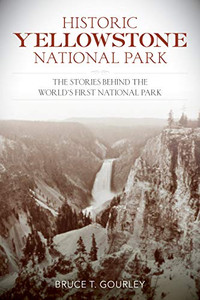

Yellowstone National Park Fishing Regulations (Fish Stories)
CreateSpace Independent Publishing Platform
ISBN13:
9781523454426
$15.75
Angling for native fish is an important part of the park's cultural history. Fishing regulations in Yellowstone National Park are structured to strongly support native fish conservation goals. Cutthroat trout are the sole, native trout of the park and were the dominant fish species here prior to Euroamerican settlement. Cutthroat trout, Arctic grayling, mountain whitefish, and other native fishes are important to the ecology of Yellowstone. Introduced nonnative fish cause loss of native fish The number of waters where native fish are found and the abundance of native fish have been substantially reduced, mostly because of impacts by introduced nonnative fish, including brook, brown, lake, and rainbow trout. These nonnative species continue to contribute to the decline in the park's native fish population by competing for food and habitat, preying on native fish, and degrading the genetic integrity of native fish by mating with them and creating hybrids. Loss of native fish impacts park ecosystems Because cutthroat trout and Arctic grayling inhabit relatively shallow waters, many animals depend on them as a food source, especially during spring when the fish spawn in small lake inlets and tributary streams. In many cases, nonnative trout cannot serve as a substitute for cutthroat trout or Arctic grayling because they occupy different habitats. For example, nonnative lake trout live deep in Yellowstone Lake, do not spawn in streams, and are generally inaccessible to many of the park's native fish-eating animals such as bears, otters, and ospreys. A plan to preserve and restore native fish Yellowstone is making a substantial, on-the-ground effort to conserve native fish in several areas. These actions, which are currently focused in the Lamar and Grayling Creek drainages and Yellowstone Lake, are described in the park's native fish conservation plan. Goals of the plan are to reduce the risk of extinction, restore and maintain the ecological role, and create sustainable angling and viewing opportunities for native fish. Anglers assist with native species conservation The Native Trout Conservation Area (see pages 3 and 4) is a large region within the park where native cutthroat trout are actively being harmed by introduced nonnative fish. Angling is one way that the nonnative fish can be selectively removed from an area without damaging the native fishery. Within this area, anglers are strongly encouraged, and in some cases required, to harvest nonnative fish. Along with actions being taken by federal and state biologists and their partners, this harvest will help to save the native fish and the natural ecosystems they support.
- | Author: National Park Service, Penny Hill Press Inc
- | Publisher: CreateSpace Independent Publishing Platform
- | Publication Date: Jan 21, 2016
- | Number of Pages: 26 pages
- | Language: English
- | Binding: Paperback
- | ISBN-10: 1523454423
- | ISBN-13: 9781523454426
- Author:
- National Park Service, Penny Hill Press Inc
- Publisher:
- CreateSpace Independent Publishing Platform
- Publication Date:
- Jan 21, 2016
- Number of pages:
- 26 pages
- Language:
- English
- Binding:
- Paperback
- ISBN-10:
- 1523454423
- ISBN-13:
- 9781523454426




